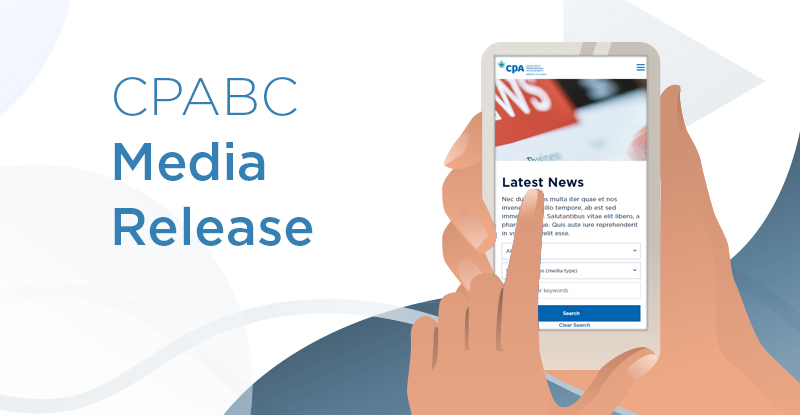
An update on anti-money-laundering initiatives
Note to readers: Much has happened since we published “The Fight Against Money Laundering” in our March/April 2020 issue of CPABC in Focus. Here, Jessica McKeachie, CPABC’s senior advisor, public interest, provides an update on her earlier article, with a particular focus on the impact of COVID-19.
What a difference a year makes. From the local level to the global stage, the COVID-19 pandemic has led to extraordinary challenges and tragic consequences over the past 12 months. And, unfortunately, while the world continues to grapple with these circumstances, it must also respond to the continued and evolving threat of money laundering and the new risks and vulnerabilities arising from COVID-19.
Pandemic money laundering
As we all try to navigate the strange new reality brought on by the pandemic, criminal organizations and actors engaged in money laundering are also adapting—finding new ways to launder money and, in some cases, moving on to other illegal activities.
According to the Financial Action Task Force (FATF), a global money laundering and terrorist financing watchdog, an “increase in COVID-19-related crimes, such as fraud, cybercrime, misdirection or exploitation of government funds or international financial assistance, is creating new sources of proceeds for illicit actors.”1 The provincial and federal governments’ responses to the pandemic, ranging from social assistance and tax relief initiatives to travel restrictions and increased procurement of medical supplies, have also unintentionally provided criminals with new opportunities to generate and launder illicit proceeds.
Here are some of the most commonly reported activities:
- Fraud – While impersonating officials with the intent to illegally obtain personal banking information or cash is nothing new, the narrative has evolved. Criminals are capitalizing on the increasingly digital/remote work environment to make their stories seem more credible.
- Cybercrime – The public’s anxiety about COVID-19 has given criminals new opportunities to trick unsuspecting individuals into clicking on malicious links or opening weaponized attachments. For example, the World Health Organization says it is aware of fraudulent emails and mobile messages being sent in its name to lure individuals into situations that require them to share their user names and passwords.2
- Human trafficking and exploitation of workers – The FATF notes that as government agencies are forced to reduce or suspend in-person activities, and as the economy slows and unemployment and financial insecurity increase, we risk seeing a correlative increase in human trafficking and worker exploitation.3
It’s important to note that not all unusual transaction activities are fraudulent. The pandemic has forced us to create new ways of doing things, and some atypical patterns may be the result of legitimate needs to access financial services. However, others may not be, which is why added vigilance is needed.
To help provide clarity, the Financial Transactions and Reports Analysis Centre of Canada (FINTRAC) detailed some characteristics of potentially suspicious transactions in a special bulletin on COVID-19, published in July 2020.4 Here are just a few examples:
- Transaction activity that is not in line with a client’s financial profile.
- Large currency exchanges for unclear or implausible purposes (e.g., international travel during a pandemic).
- Large cash deposits where the source of funds is unclear or implausible.
- Transactions deemed unlikely given a business’s profile and the anticipated impact of the COVID-19 pandemic on the operating model.
- Unusual or suspicious transactions involving the sale or procurement of medical equipment that’s in high demand due to the pandemic.
- Large cash withdrawals by individuals, as they may be victims of crime themselves.
FINTRAC notes that these examples are not necessarily evidence of money laundering and says they must be examined in conjunction with other risk factors.Anti-money-laundering regulatory amendments relevant to CPAs
Just as the pandemic has created new opportunities for criminals to exploit the system, it has also provided a reminder that CPAs must remain vigilant in their efforts to detect and report possible instances of money laundering and other financial crimes.
In my earlier article, I mentioned that the Proceeds of Crime (Money Laundering) and Terrorist Financing Act (PCMLTFA) requires accountants and accounting firms to help combat money laundering and terrorist financing in Canada by meeting specific compliance, reporting, and record-keeping requirements. It’s important to note that a number of new regulatory amendments will come into force on June 1, 2021, that will affect CPAs who are subject to PCMLTFA. For example:
- Beneficial ownership obligations will be extended to all reporting entities, including CPAs;
- The obligations of politically exposed persons will be extended to all reporting entities, including CPAs; and
- Virtual currency obligations will be extended to all reporting entities, including CPAs.
More information about the new amendments and CPAs’ obligations under the PCMLTFA can be found on CPABC’s new anti-money-laundering resources page. (You can also expect this page to be updated as new information becomes available.)
Additionally, CPAs need to be aware of the two new beneficial ownership registries created in BC in 2020. At the time of the previous article’s writing, the legislation had been passed but the registries were not yet operational. They now are. Effective October 1, 2020, BC companies are required to keep and maintain transparency registries, in accordance with legislative changes made to the Canada Business Corporations Act.5
And effective November 30, 2020, anyone applying to register an interest in land is required to make a disclosure filing under the Land Owner Transparency Act.6 These registries are designed to enhance transparency and end hidden ownership in BC’s business and real estate sectors.
Commission of Inquiry into Money Laundering in BC
As mentioned in the March/April 2020 issue, the provincial government created the Commission of Inquiry into Money Laundering in British Columbia (the Cullen Commission) in the spring of 2019 to take a deep dive into the issue of money laundering, with public hearings slated to start in February 2020. Hearings were subsequently held in late spring/early summer and late fall, and they will continue through early 2021.
The accounting profession, represented by CPABC and CPA Canada, is scheduled to appear in January, and at the time of this writing in December 2020, we’re expecting to address questions about the regulation of CPAs, the role of CPAs in Canada’s anti-money-laundering regime, and, potentially, how our regime compares to those in other countries. These questions are similar to those asked of the legal profession when its representatives appeared before the Cullen Commission in November 2020.
The Cullen Commission is required to submit a final report by May 2021. We’ll keep you updated as we learn more.
Insights from FINTRAC
How money is laundered
FINTRAC defines money laundering as a three-stage process:*
- Placement: Criminals put the proceeds of crime (“dirty” money) into the financial system.
- Layering: They then “launder” the dirty money through a variety of transactions (buying property, for example) to hide the money trail and the various players.
- Integration: Lastly, they place the laundered (“clean”) money into the economy to make their business seem legitimate.
Top 5 offences connected to money laundering
In its 2019-2020 case disclosures, FINTRAC identified the following crimes as the top five generators of dirty money:**
- Drugs: 31%
- Fraud: 30%
- Tax evasion: 14%
- Crimes against persons: 9%
- Human smuggling/trafficking: 8%
* FINTRAC, Annual Report 2019-20 (6). (fintrac-canafe.gc.ca)
Jessica McKeachie is CPABC’s senior advisor, public interest.
Originally published in the January/February 2021 issue of CPABC in Focus.
Footnotes
1 FATF (2020), COVID-19-Related Money Laundering and Terrorist Financing – Risks and Policy Responses, Paris, France, May 2020 (4).
2 World Health Organization (WHO), “Beware of Criminals Pretending to be WHO.” Accessed December 3, 2020.
4 FINTRAC, Special Bulletin on COVID-19: Trends in Money Laundering and Fraud (20/21-SIRA-006), July 2020.
5 Unlike the Land Owner Transparency Registry, there is no central registry under the Canada Business Corporations Act. Each company is required to keep its own registry. Details can be found online.



